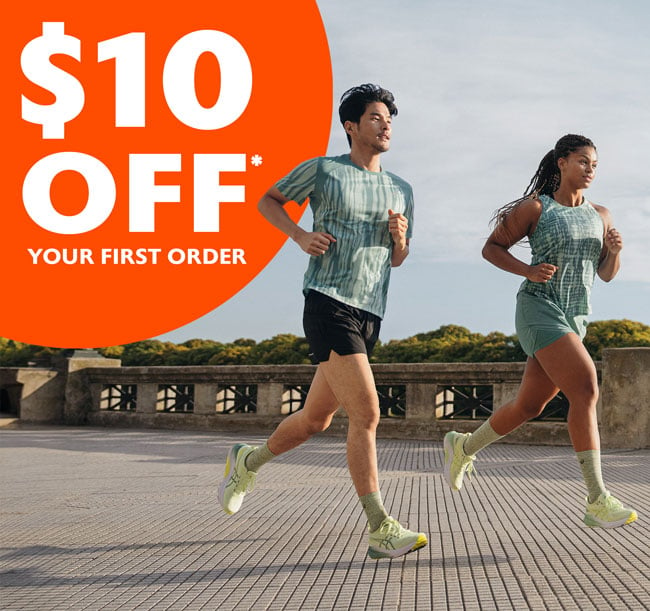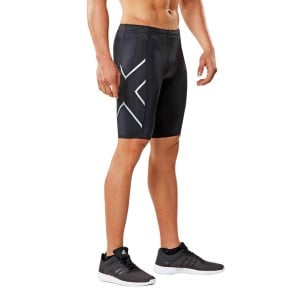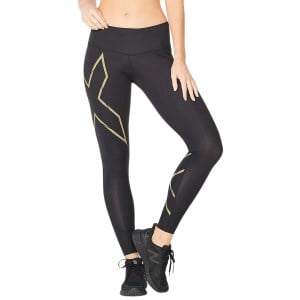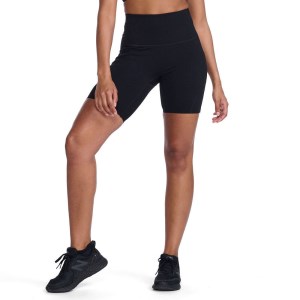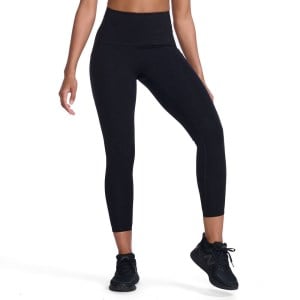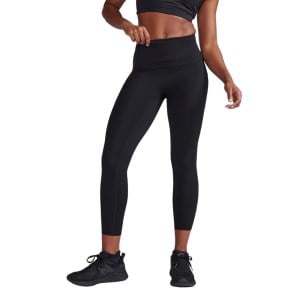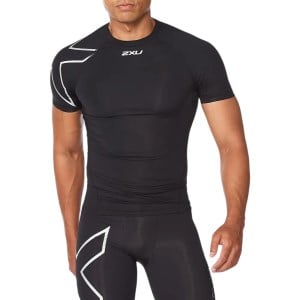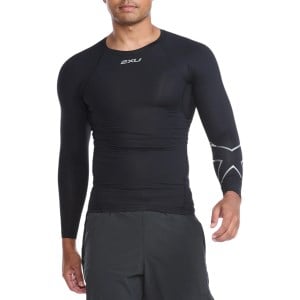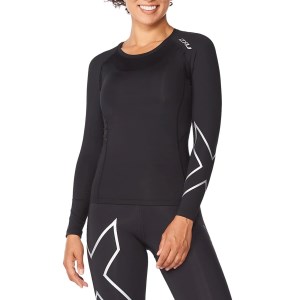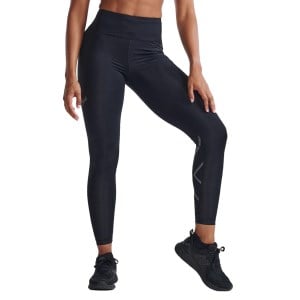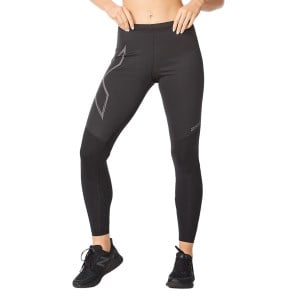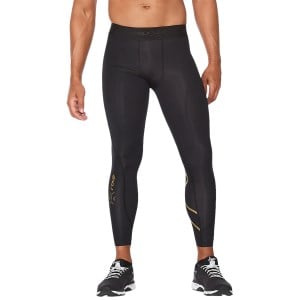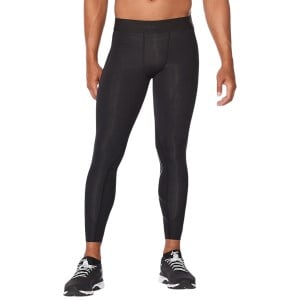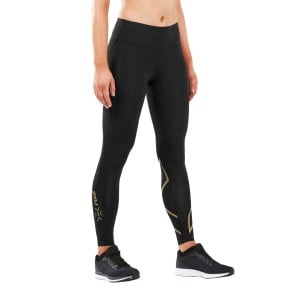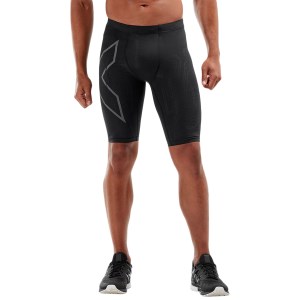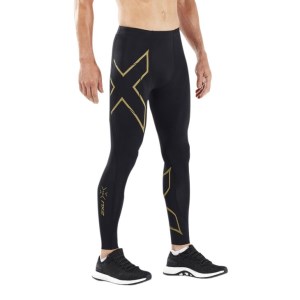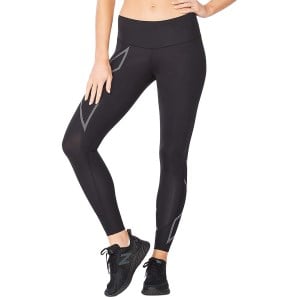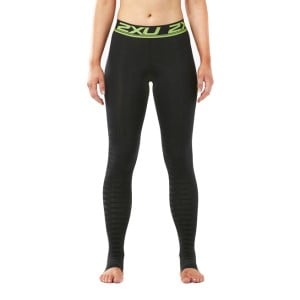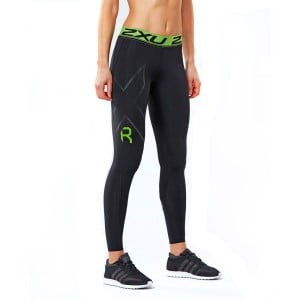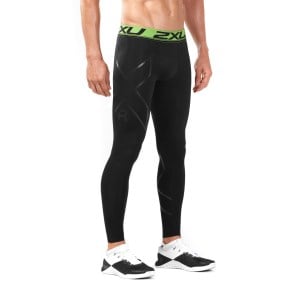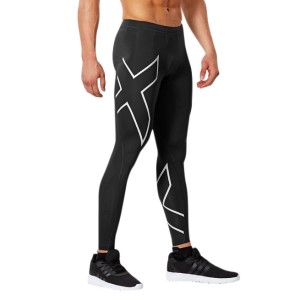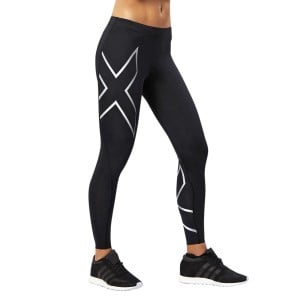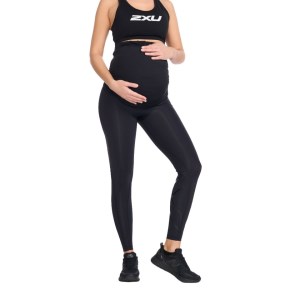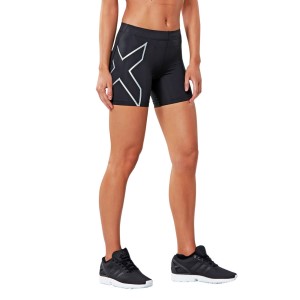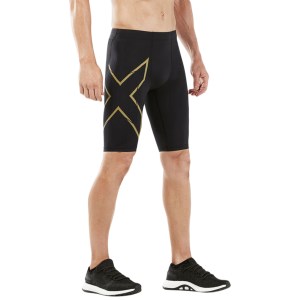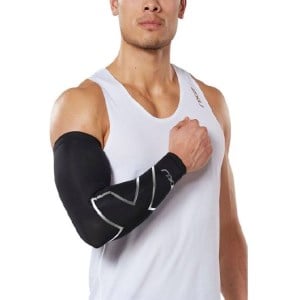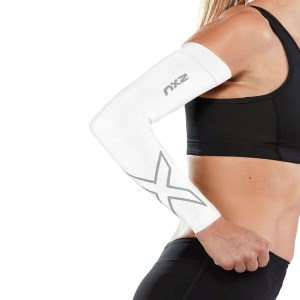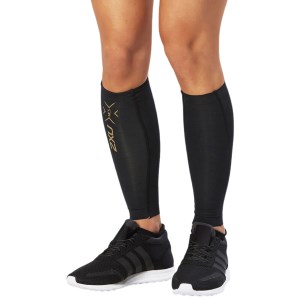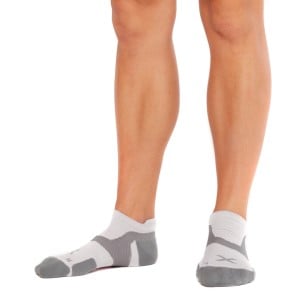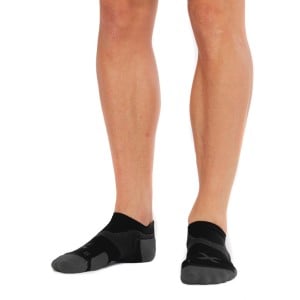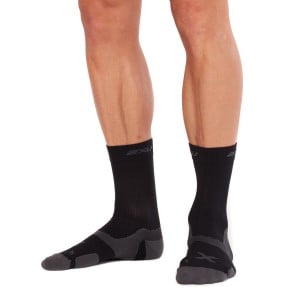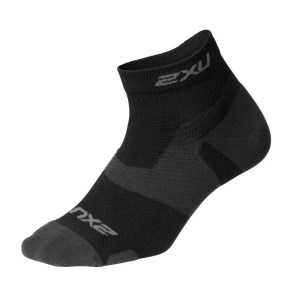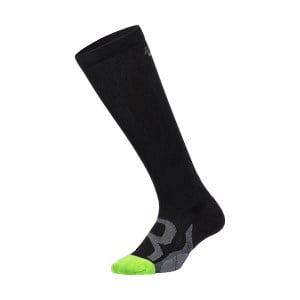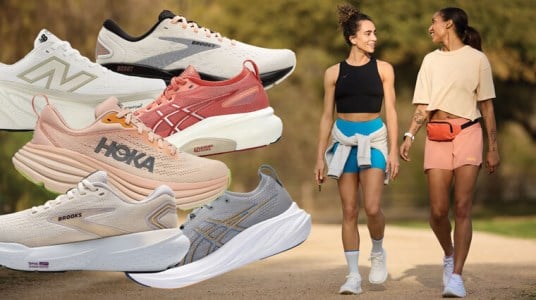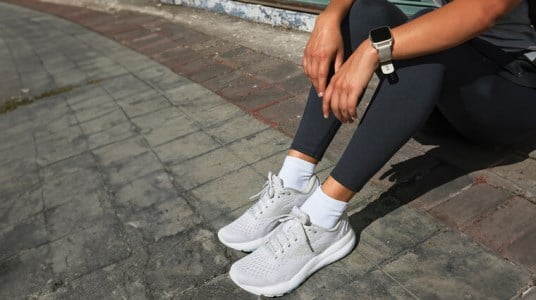A Runner's Guide: How Compression Clothing Helps Your Recovery
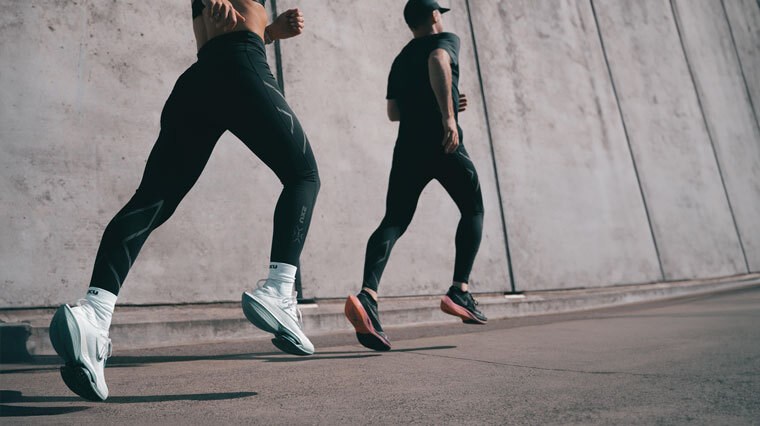
Your recovery as a runner begins before you even lace up in your running shoes or cross the starting line. Your nutrition, sleep quality and restorative activities like foam rolling all play a part in helping you care for your body, whether you're a beginner runner or a seasoned marathoner.
What you wear can also make a dramatic difference in speeding up your recovery. Recovery shoes like Hoka thongs and slides not only treat your feet to luxury post-workout, but provide essential cushioning and support, reducing the risk of common running injuries like plantar fasciitis. However, on their own recovery shoes may not be enough.
Wondering what's missing from your recovery toolkit to rejuvenate your tired, aching legs? Compression clothing.
From priming your muscles for activity, to alleviating post-run soreness, we discuss the research-based benefits of compression gear in supporting your run-ready mindset, muscle health and repair, and injury prevention.
Discover how to choose the right compression gear for you from torso to toe to help prevent overtraining, and learn how 2XU running clothing has been game-changing in the recovery of runners of all abilities for nearly two decades.
-
2XU Mens Compression Shorts
-
2XU Mens Compression Tights - Black/Nero
-
2XU Light Speed Mid-Rise Womens Compression Tights
The Evolution Of Compression Gear
If we reverse the clock, the original purpose of modern compression clothing was for medical treatment, with the first compression sock designed in the 1950s by German engineer Conrad Jobset. It provided relief from his varicose veins by applying pressure to the connective tissues and muscles.
However, that wasn’t the true beginning of compression for medical practice. If we go back as far as the 16th century into France’s ancient history, a compression technique was being developed by a surgeon named Ambroise Paré, who applied bandages tightly to wounded soldiers to manage bleeding.
From the 1980s, the athletic benefits of compression were coming to light. In 1996, sportswear brand Skins emerged, specialising in compression apparel that provided recovery benefits for athletes as pioneers in this space.
In 2005, 2XU (Two Times You) launched, being a top-tier Australian brand that was spearheading compression garments into the 21st century. Engineered with a research-driven approach and a rigorous attention to detail from manufacture to real-world testing, 2XU garments are among the most sought-out compression gear in the market.
What Is The Difference Between Compression Tights & Standard Running Tights?
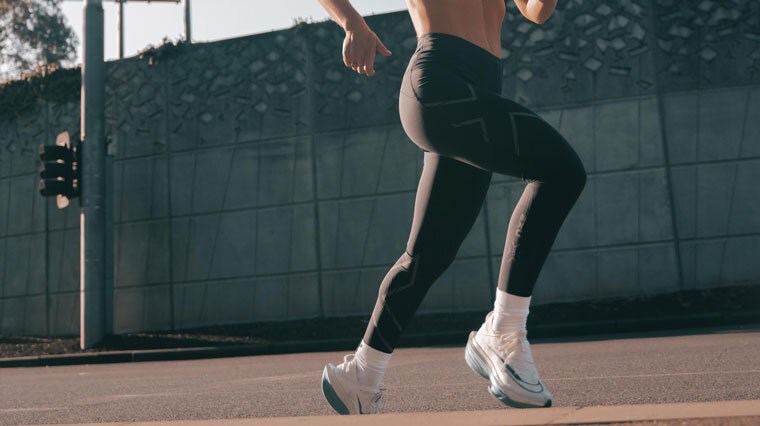
Compression tights and standard running tights share similarities. Both have a place in your running wardrobe, but it’s important to understand the differences to make informed purchases.
Many running tights from top brands such as Asics, Brooks, Nike and Running Bare have a next-to-skin fit, but don’t necessarily feature compression qualities unless the tag or description specifically indicates this. On the other hand, 2XU and Skins are experts in compression technologies, and specialise in compression clothing specifically, which often contains recycled materials. Today, we’ll focus on 2XU as Sportitude's best-selling running clothing.
Both high-quality compression tights and non-compressive running tights feature:
- Lightweight performance fabric, typically made from synthetic materials like polyester, nylon and elastane
- Advanced, sweat-wicking and quick-drying technologies (e.g. Nike Dri-Fit) to keep you cool, dry and fresh
- Breathable and ventilated designs to support temperature control
- A supportive, second-skin fit that provides just-right stretch to flow with your movement
Although both compression tights and standard running tights can support your comfort during performance, compression tights take the recovery benefits considerably further. Not only do they provide a body-conforming fit, but this fit is compressive, meaning it applies pressure to your muscle groups.
Imagine gently squeezing a garden hose. This squeezing action boosts the flow of water, similarly to how the external mechanical pressure of compression garments to your blood vessels increases blood flow like a ‘muscle pump’. The increase in circulation supports the delivery of nutrient-rich and oxygen-rich blood to your active or recovering muscles, helping alleviate aching and soreness.
Specifically, graduated compression in terms of compression tights, refers to those that offer tighter or higher levels of compression at the ankles and lower leg. These garments gradually apply less pressure as they follow up your body through the calves, knees, quads, adductors, hamstrings and glutes. On the other hand, basic compression offers a consistent level of compression from ankle to hips for generalised muscle stabilisation.
The result is that graduated compression garments help your blood travel in the direction of your heart, improving blood flow and venous return compared to non-graduated compression apparel.
Is It Good To Wear Compression Clothing While Running?
There are both conflicting and non-conclusive studies on the kinetic performance benefits of compression garments, with some suggesting minor, insignificant or no benefits regarding compression apparel and your motion in reference to your running economy (running efficiency).
It’s unlikely compression tights themselves will make you a faster runner (check out these training tips to run your fastest parkrun / 5K), but this isn’t to say that they can’t give you an edge in other ways.
This 2016 study suggests that wearing compression garments correlates with slight increases in endurance by increasing time to exhaustion. However, where compression garments seem to be the most advantageous is in injury prevention and recovery, and it stems from their medical benefits that we discussed previously.
These recovery benefits are the most effective when compression clothing is worn into the 4 hours following training or racing, whether you're a beginner runner or elite marathoner.
Compression tights may also have immeasurable or subjective benefits, making you a more comfortable or confident runner. Some studies including this 2019 article on Wearing Compression Socks During Exercise suggest the belief the participants have in the value of compression garments itself may translate to real-world benefits with a placebo effect.
In other words, your mindset matters. When worn correctly, there’s certainly no disadvantage in wearing compression tops, compression tights and compression socks for running, so this psychological benefit in itself could be an incentive to give them a go.
Alongside your preparations and training, your running performance comes down to your attitude or perceptions. When you’re feeling positive mentally and supported physically, this could potentially translate to performance benefits – keeping you motivated to run further or faster - but it’s really up to you to decide whether this is applicable to you.
Do Compression Clothes Help Recovery?
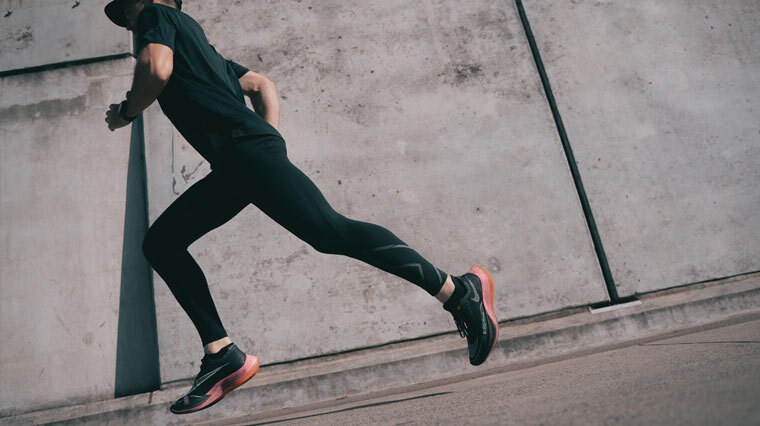
Wearing compression clothing during your runs is worth it – but it’s more about its relationship in supporting recovery rather than improved performance, that makes a positive difference to you as a runner. The direct ability of compression clothing to support quality recovery may indirectly lead to quality performance – allowing you to train and run more regularly, without the interference of extended soreness or injury.
Below is a snapshot of the recovery and injury prevention benefits of compression garments, but it is important to note the intention of research articles when making conclusions to stay aware of potential bias.
Increased Blood Circulation
As we discussed, one of the key differences between compression tights and standard running tights is the compressive fit that increases the transport of oxygen-rich and nutrient-rich blood to your muscles and tissues. It’s understandable that this would lead to theories regarding the performance benefits of compression tights, with the belief that increased oxygen supply to muscles, leads to increased power output.
On the contrary, keeping in mind that our bodies are engineered to run with muscle movement naturally increasing blood flow, it’s unlikely that compression tights offer a significant direct performance benefit on top of your natural physiology.
Again, it’s recovery where compression tights shine. According to this 2022 study published in Scientific Reports, this extends beyond simply a placebo effect. Wearing compression tights in the 4 hours following exercise leads to physiological benefits, including increasing blood circulation and improving venous return.
This increases the delivery of nutrients to recovering muscles, and allows blood pooling in the lower limbs to travel towards the heart by assisting the ‘muscle pump’ action, reducing swelling in the feet and ankles. This is why compression tights and compression socks are also a popular choice for travel and inactivity, with improved venous return a preventative measure against deep vein thrombosis (DVT). Increased circulation also can potentially reduce sensitivity to pain or discomfort.
This corresponds with the results of this 2018 study that suggests that like massage, compression tights can lower the perception of soreness post-workout. According to this article, although massage appears to be the most effective in reducing DOMS (delayed-onset muscle soreness) and perceived fatigue, compression garments may share these positive benefits.
With this knowledge, you can personalise and diversify your recovery toolkit. If you don’t have easy access to a massage gun or a massage therapist, wearing your compression tights into the recovery period may be a practical option for you, compared to remaining stationary in non-compressive clothing which can put you at greater risk of overtraining.
Reduced Muscle Oscillation
Muscle oscillation or muscle vibration is a natural part of running. During the repetitive impacts on the pavement, your muscles experience minor trauma as impact stresses shoot up your body like ripples, starting with your feet. This 2020 study revealed using 3D motion capture, that the tight fit of compression clothing that stabilises your muscles, can also reduce soft tissue vibrations, and highlights the benefits of 2XU specifically.
Opinions vary on the real-world benefits reduced muscle oscillation has to runners and athletes, with some suggesting it conserves energy and reduces muscle fatigue. With conflicting evidence, this remains unclear. Although reduced muscle oscillation doesn’t appear to improve running economy, there does seem to be a connection between improved injury prevention and compression garments.
What does stand out is the recovery benefits of reduced muscle oscillation during your runs. According to a 2022 study, during exercise the perception of exertion remains consistent between wearing non-compression clothing and compression clothing. However, there is a decrease in perceived pain and soreness experienced post-run in favour of compression clothing.
This 2022 narrative review also suggests the potential benefit of wearing compression clothing while enduring the increased impact forces of downhill running by decreasing soft tissue vibrations, therefore reducing damage and supporting faster recovery.
This study also supports the injury reducing benefits of minimising muscle oscillation achieved by wearing compression garments. The muscle and joint support of compression tights may have a protective effect during repetitive movement like running, minimising the severity of muscular damage. This also makes compression clothing an ideal for runners susceptible to strains and sprains.
Improved Proprioception
Being a tight-fitting garment that wraps your muscles, compression clothing increases your proprioception (awareness of your body in space), activating sensory receptors in your skin.
A 2022 study on the Effects Of Compression Running Pants suggests the ability of compression garments to increase knee proprioception in half marathon runners, an injury-prone zone, even as they fatigue at the 14km and 21km mark.
This means you are more in tune with your muscle movement, being less susceptible to injury, which in turn allows you to maintain proper running form and feel more controlled in your strides. This increased awareness of your muscles and limb placement, may help you ‘listen to your body’ in terms of when to shift down the pace a gear, reducing your risk of injury.
Research suggests that tight-fitted compression garments can also improve your stability, as per this 2020 study. The focus of the study was on participants performing a forward lunge (a single-leg exercise) specifically, but it wouldn’t be a far stretch to suggest the same could be applied to other activities that rely on your balance and coordination.
Trail running comes to mind, with the potential for compression garments to increase your proprioception, balance and stability, allowing you to navigate natural debris like roots or fallen branches more safely and confidently.
Warms Up Your Muscles & Protects Against The Elements
Compression tights increase your skin temperature, as suggested by this 2022 study. Warmer muscles are less susceptible to injury compared to cold and stiff muscles and tissues, as the former are more flexible. This elasticity makes your muscles more tolerant to increased physical demands on your body, like running. Alongside increasing blood circulation, this warming effect may support the quality of your warm-ups, helping prime your body for muscle movement.
The benefits transfer over to colder weather, when running injuries are the most prevalent due to the cold weather resulting in tense, tight muscles and hindering circulation. Compression clothing can act as a barrier against the chill or wind and can capture your body warmth against your skin. 2XU also feature a thermal women's compression top and men's thermal compression top with soft brushed fabric for additional cold weather protection.
The combination of this muscle warming effect and the breathable performance fabric and sweat-wicking technologies of compression clothing like 2XU, helps aid in injury prevention while helping maintain your body at an optimal temperature all-year round without overheating. Sweat is transferred to the exterior of the garment where it can evaporate rapidly, supporting the natural cooling mechanism of your body.
Many of the 2XU collection offer UPF 50+ protection, making them also ideal for summer runs, when UV levels in Australia reach their peak. Although this isn’t directly related to recovery or injury prevention for runners, taking care of your skin is a key part of supporting your overall wellbeing.
How To Choose Compression Tights & Tops
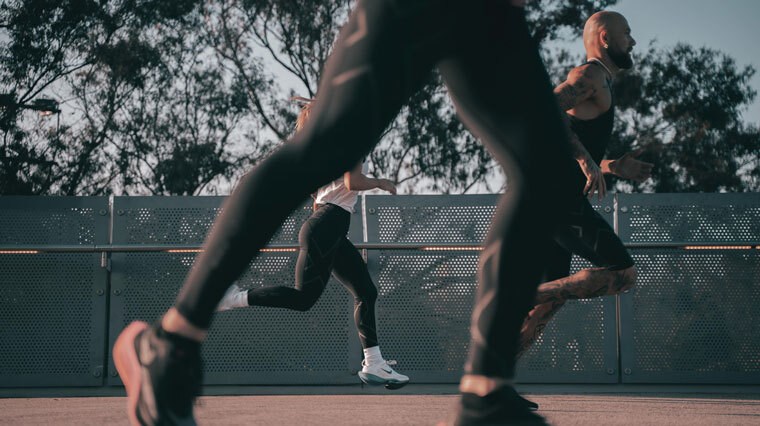
There is a compression tight for every runner in the 2XU collection. To make your choice simpler, they break down their key compression clothing based on the compression qualities and intended use.
Mild Graduated Compression: Form Range
Ideal for training, the Form range meets the demands of runners of all abilities, with gentle support that makes it an ideal starting point for beginners to compression clothing, or for everyday wear. The Form range prioritises comfort, combining mild graduated compression with a luxuriously soft touch.
-
2XU Form Stash Hi-Rise Womens Compression Bike Shorts
-
2XU Form Stash Hi-Rise Womens Compression Tights
-
2XU Form Stash Hi-Rise Womens 7/8 Compression Tights
Moderate Graduated Compression: Core, Aero, Motion & Ignition Range
The roots of 2XU grew from the Core range, which has now expanded into the Aero, Motion and Ignition collections. With moderate graduated compression and optimal flexibility, they're a balanced option that’s ideal for running and training, while prioritising powerful sweat control. If you run regularly, moderate graduated compression is your go-to.
-
2XU Core Compression Mens Short Sleeve Top
-
2XU Core Compression Mens Long Sleeve Running Top
-
2XU Core Compression Womens Long Sleeve Running Top
-
2XU Aero Hi-Rise Womens Compression Tights
-
2XU Ignition Shield Womens Compression Tights
Firm Graduated Compression: Force & Light Speed Range
According to 2XU, the Force and Light Speed range “traces the key muscle groups involved in training”, minimising muscle vibrations and therefore, muscle damage. Boosting the Core collection with MCS (Muscle Containment Stamping), they’re designed for athletes seeking precise support and stabilisation of fascia groups, ligaments, muscles and tendons.
The compression qualities of the Force collection focus on keeping you gym-ready from HIIT to strength training. Alternatively, the Light Speed collection targets muscles specific to running – your quads and calves. They alleviate strain to your knees, and keep you run-ready with multiple back pockets for storage of your running nutrition.
-
2XU Force Mens Compression Tights
-
2XU Force Mens Compression Tights
-
2XU MCS Force Cross Train Mid Rise Womens Compression Tights
-
2XU Light Speed Mens Compression Shorts With Back Storage
-
2XU MCS Light Speed Run Mens Compression Tights With Back Storage
-
2XU Light Speed Mid-Rise Womens Compression Tights
Extra Firm Graduated Compression: Recovery Range
Post-training or post-marathon, the 2XU Recovery range helps speed up recovery time. The 2XU Power Recovery compression tights feature an over-foot stirrup for complete compression from the ball of the foot to your hips. This helps alleviate soreness to the lower body, boosting circulation during recovery to keep you primed for your next run.
The 2XU Refresh Recovery tights are an effective alternative for runners that prefer a design free of the over-foot stirrup, while offering full-length coverage to rejuvenate their leg muscles post-run.
-
2XU Power Recovery Mens Compression Tights - Black/Nero
-
2XU Power Recovery Womens Compression Tights
-
2XU Refresh Recovery Womens Compression Tights
-
2XU Refresh Recovery Mens Compression Tights - Black/Nero
What Is The Best Compression Gear For Running?
Your personal preference, the external temperature and injury history are all factors that may influence what is the best compression gear for you.
2XU offers a diverse collection to cater to your specific recovery needs and personalised comfort as a runner. Many feature 2XU's lightweight and powerful PWX fabric for effective graduated compression, sculpting to your body while being resilient to the challenges of your training.
Running Compression Tops
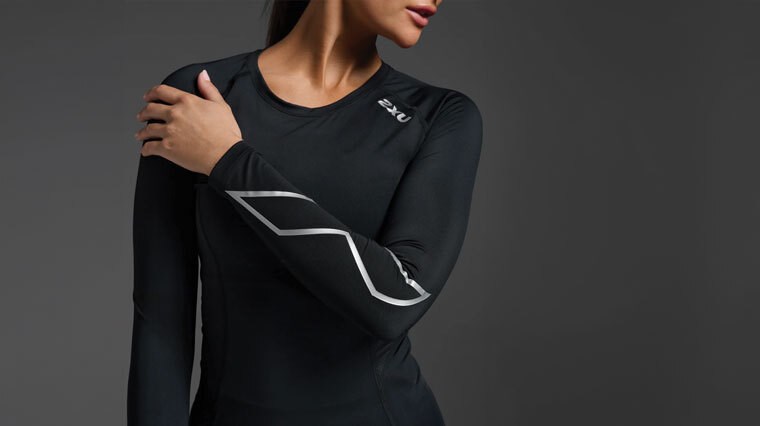
The tight fit of running compression tops can improve your proprioception, making you more aware of your running posture in terms of your torso, spine and arms to maintain proper alignment of the upper body. Compression shirts are designed for powerful support and a second-skin fit without compromise to your mobility.
2XU's Core range of compression tops support fast recovery. They feature PWX fabric with 360-degree circular stretch and PWX vent panels for breathable comfort as the temperature or the intensity of your run climbs.
-
2XU Core Compression Mens Short Sleeve Top
-
2XU Core Compression Mens Long Sleeve Running Top
-
2XU Core Compression Womens Long Sleeve Running Top
Running Compression Tights
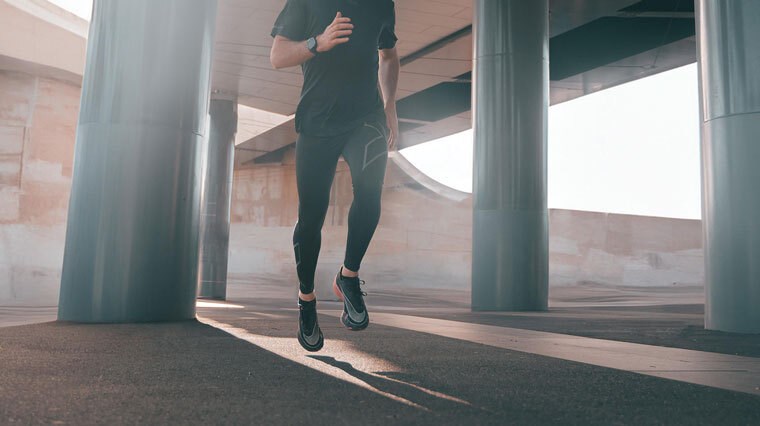
For the most effective physiological benefits of compression for runners, full-length 2XU compression tights are an essential part of your running and recovery wardrobe, with compression shorts sharing these advantages to a lesser degree.
Full-length compression running tights support your circulatory system across the major lower body muscle groups activated during your runs - from the ankle, up your calves, gastrocnemius, adductors and quadriceps (thighs), with graduated compression particularly key to recovery in the 4 hours post-run.
Consider mid-rise to high-rise compression tights for smooth, confidence-inspiring support. High-rise styles also help ensure a stay-put fit for zero distractions.
During pregnancy, maternity compression tights can help boost blood flow with graduated compression to support the health of you and your baby, while reducing the swelling of your feet and ankles and increasing your lower back support. The 2XU Maternity Pre-Natal Active women's compression tights offer a non-compression stomach panel for comfort and confidence as your baby grows, while providing compression benefits for the full length of your legs.
-
2XU Mens Compression Tights - Black/Silver
-
2XU Womens Compression Tights
-
2XU Maternity Pre-Natal Active Womens Compression Tights
Running Compression Shorts
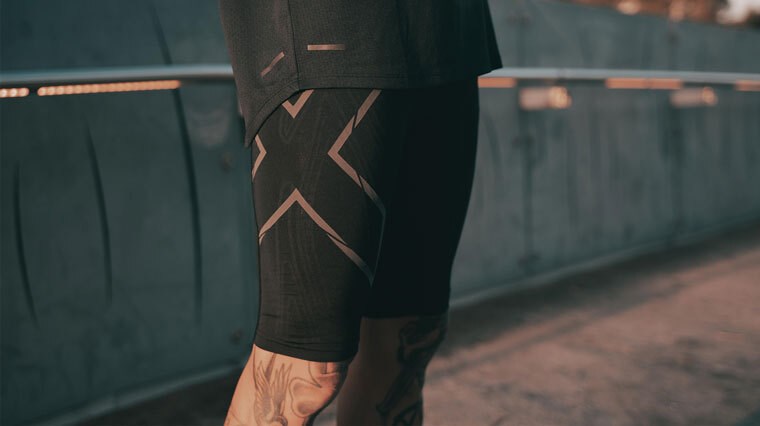
2XU compression shorts provide targeted support and reduced muscle oscillations of the muscles of your upper leg, including your quadriceps, hamstrings, hips and glutes. They're a versatile option for warmer weather, providing the recovery benefits of compression and increased circulation while leaving more skin exposed compared to full-length compression tights to aid in cooling.
Some runners prefer to wear compression shorts on their own, whereas others prefer to wear them under a relaxed pair of running shorts as a baselayer, providing additional coverage and protection against chafing.
-
2XU Compression Mens Half Shorts
-
2XU 5 Inch Womens Compression Shorts
-
2XU Light Speed Mens Compression Shorts With Back Storage
Running Compression Sleeves
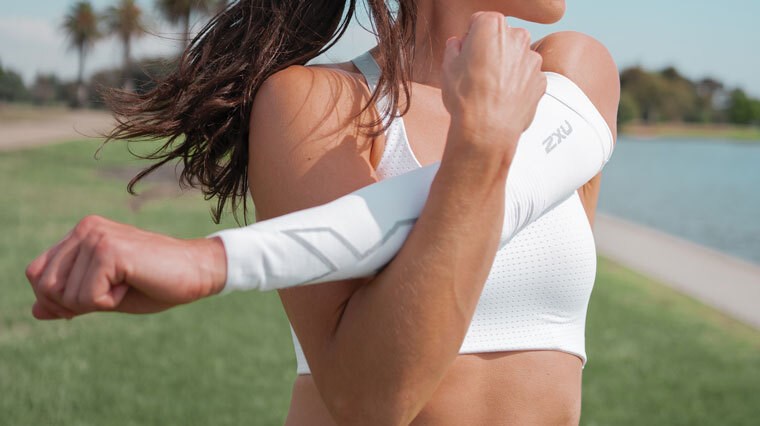
Compression sleeves are ideal for when you're seeking targeted support and protection of your muscles and joints, or versatility for any weather. Being able to pair easily with your running clothing, some runners prefer a combination of running shorts and compression calf sleeves as opposed to wearing full-length compression running tights.
If you find you experience targeted discomfort in your arms or legs when running or are seeking to increase the proprioception of your limbs to improve running posture, compression sleeves could be ideal for you.
-
2XU Compression Arm Guard - Single
-
2XU Flex Run Compression Arm Sleeves
-
2XU Unisex LightSpeed Compression Calf Guards
Compression Running Socks
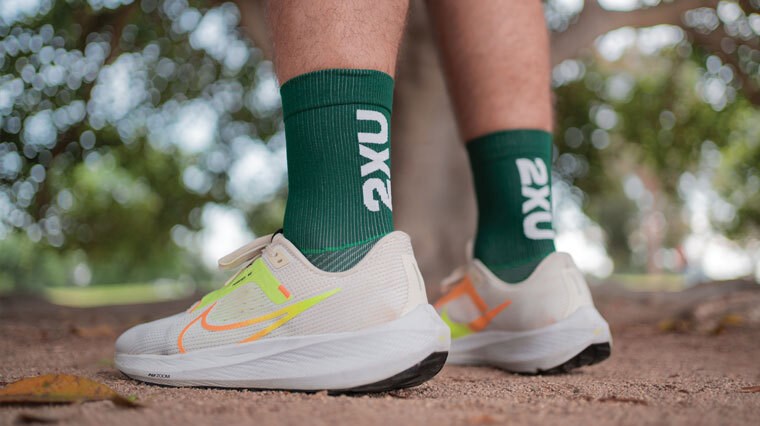
Compression socks and stocking have a long history in providing medical benefits, which have been adapted into run-ready designs for the modern athlete.
As a runner, you endure high and repetitive impact forces, which can result in uncomfortable muscle oscillations, starting with your feet. They are the first part of your anatomy to feel these running stresses, and compression socks can help provide relief of this soreness as you recover.
Since your lower leg, particularly your feet and ankles, are susceptible to swelling and blood pooling, compression socks are a popular choice for runners of all abilities, as well as for women during pregnancy to alleviate discomfort. 2XU compression socks with graduated compression, help improve blood flow from your legs to the heart, supporting your recovery.
Meeting the criteria of what makes the best running socks, they offer breathable and moisture-wicking yarns, seamless toe construction, supportive arch, protective cushioning and a left and right specific fit. X-LOCK technology provides a blister-free, friction-free feel that conforms to the natural anatomy of your feet.
-
2XU Vectr Cushion No Show - Unisex Running Socks
-
2XU Vectr Cushion No Show - Unisex Running Socks
-
2XU Vectr Cushion Crew - Unisex Running Socks
-
2XU Vectr Light Cushion 1/4 Crew - Unisex Running Socks
-
2XU Unisex Compression 24/7 Socks
-
2XU Unisex Compression Recovery Socks
How Should Compression Garments Fit?
If you're new to compression clothing you're probably wondering, how tight should compression clothes be?
Finding the right size is key to ensure your compression clothing is effective in supporting recovery. Your compression clothes should provide a snug, second-skin fit, and feel smooth against your skin without any wrinkled fabric.
Your compression clothing for running should not feel restrictive. It should be fairly tight but comfortable and provide full mobility.
For compression tights, it shouldn't feel like the fabric is squeezing uncomfortably to your waist. However, it's normal for compression clothing to require a little extra effort to put on compared to standard running tights, with their elastic properties providing optimal stretch for a body-conforming fit.
Try these sizing tips to ensure the fit of your compression clothing isn't too tight.
- You should be able to slide a hand beneath your compression apparel comfortably without excess resistance.
- You should be able to squat fully in your compression tights without feeling constricted and without them sliding down.
Prior to purchase, check the size chart of the specific manufacturer against your measurements. In most cases it's recommended that you select your regular size, however if you're new to compression gear, you may consider sizing up to get used to the unique feel of this specialised running and recovery clothing.
Run for it!
